It is evident that raising awareness and actively involving the population in the control and management of invasive species is of utmost importance. The success of any effort aimed at combating these ecological threats relies heavily on the collective efforts and engagement of the community.
Invasive species cause one of the greatest threats to biodiversity and ecosystems worldwide. Many species are introduced into environments different from their place of origin and can quickly proliferate, causing significant harm to the ecosystems, economy, and public health. Invasive species have the capacity to establish, reproduce, and spread uncontrollably, out-competing native species and leading to a loss of biodiversity. They can also cause economic damage, impacting agriculture, fisheries, and even human health.
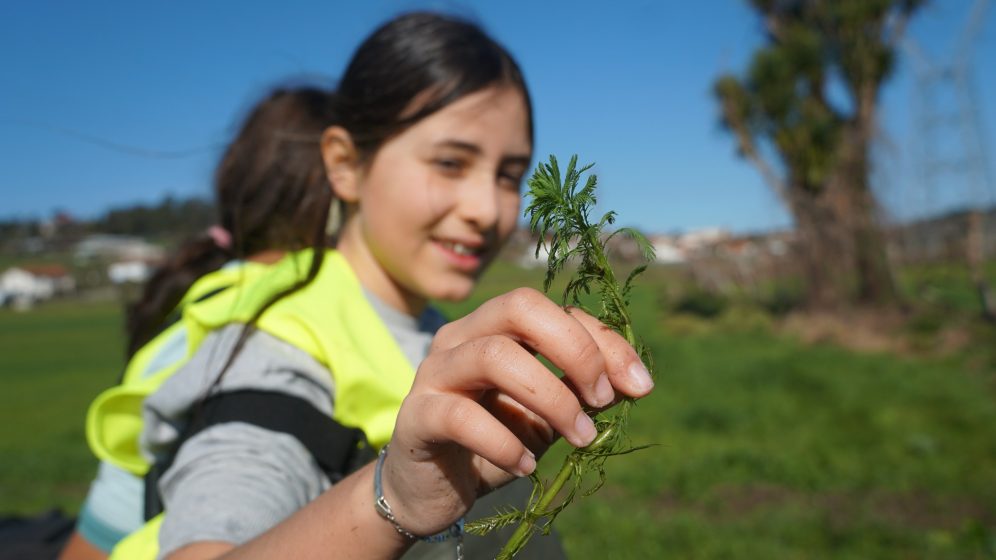
The rapid and large-scale introduction of new species poses a significant challenge for ecosystems, as it prevents local species from having enough evolutionary time to adapt effectively. In contrast to the past, when new species were introduced gradually over longer periods, the present-day introductions occur rapidly and in large quantities, leaving insufficient time for native species to develop defense mechanisms or acclimate to the new arrivals.
One example of the destructive impact of invasive species is the Asian hornet (Vespa velutina), which has invaded various regions in Portugal and poses a threat to honeybees (Apis mellifera). Honeybees, unfamiliar with this invasive species, are unable to recognize it as a threat and lack the time to develop adequate defense strategies, resulting in negative impacts on the bee population and ecosystem balance.
Controlling invasive species represents a significant cost for governments and cities. Global annual expenses for the control and management of invasive species exceed €116.61 billion (Haubrock et al., 2021), covering activities such as monitoring, removal, habitat restoration, and public awareness programs. These financial costs highlight the need for ongoing investments to mitigate the negative effects of invasive species.
In light of the destructive impact of invasive species on ecosystems, economies, and public health, it is crucial to examine the measures cities are taking to control and manage these species. What actions are cities implementing to address the threat of invasive species and safeguard biodiversity?
Local approaches to invasion management
In the city of Guimarães, located in northern Portugal, efforts have been made to control and manage invasive species. The municipality of Guimaraes, in collaboration with the Landscape Laboratory, launched a project called SEM Invasoras in 2022. This project was approved and financed by the National Environmental Fund and has two main goals: (1) to raise public awareness, improve literacy, and encourage active engagement in the monitoring and management of invasive species and (2) to control and monitor invasive species, focusing on finding ecological solutions to tackle the spread of the Japanese knotweed (Fallopia japonica). This species is widely recognized as among the 100 worst invasive alien species in Europe, causing significant damage to local ecosystems.
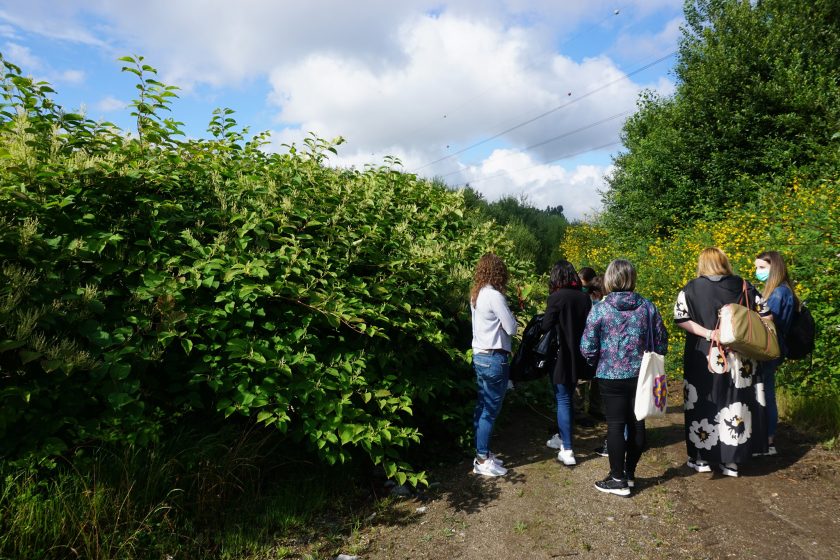
As part of the SEM Invasoras, we conducted an experiment to assess the effectiveness of four biodegradable mesh materials as an innovative approach for managing Fallopia japonica. Two distinct areas were selected for this study—one close to the river and the other within a forested area. In combination with the mesh implementation, native species will be also planted to promote competition and facilitate the regeneration of the forest and riparian landscape. This comprehensive initiative was designed to address the limitations of current control strategies while exploring alternative methods. Traditional methods commonly rely on the frequent use of chemical herbicides (e.g., glyphosate), which can have detrimental effects on the environment due to their extensive use and detection in ground and surface water. Therefore, there is a growing need for innovative and environmentally friendly approaches to effectively manage the spread and growth of invasive species, especially this kind of species that are difficult to control. For more details on the study, see SEM Invasoras – Laboratório da Paisagem (labpaisagem.pt).
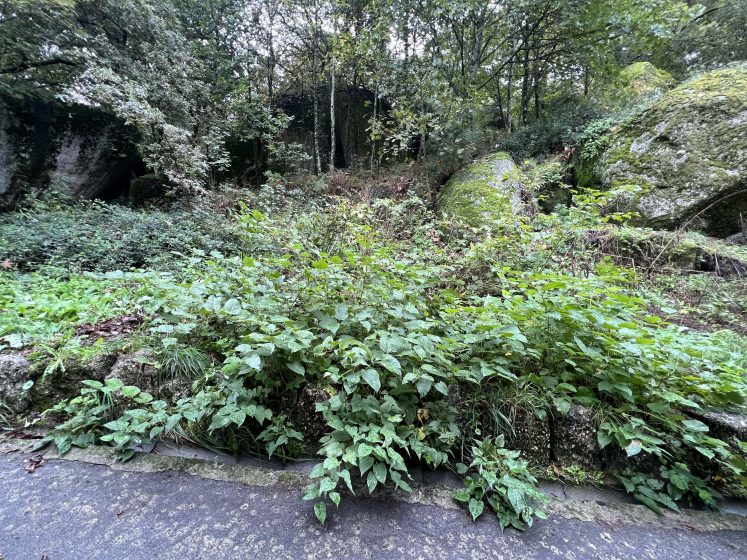
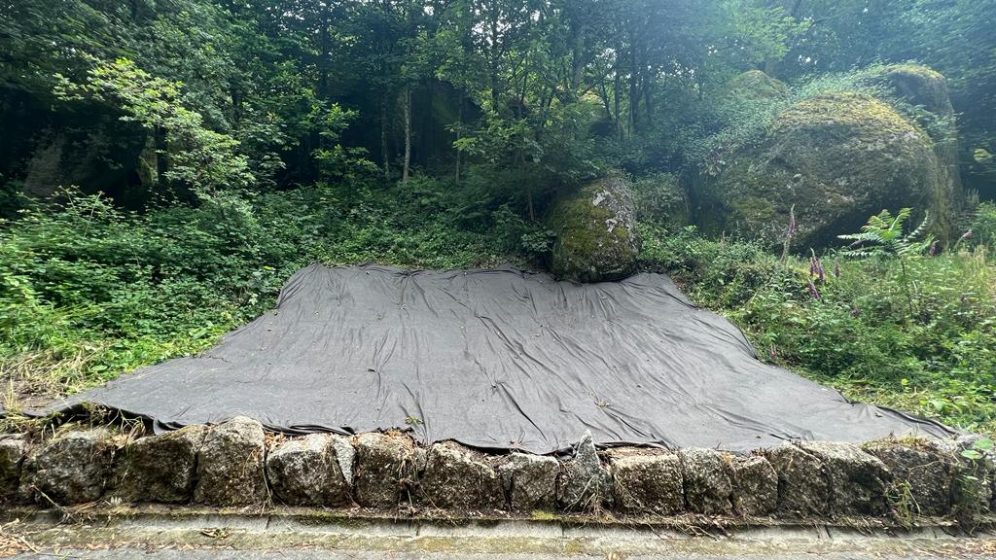
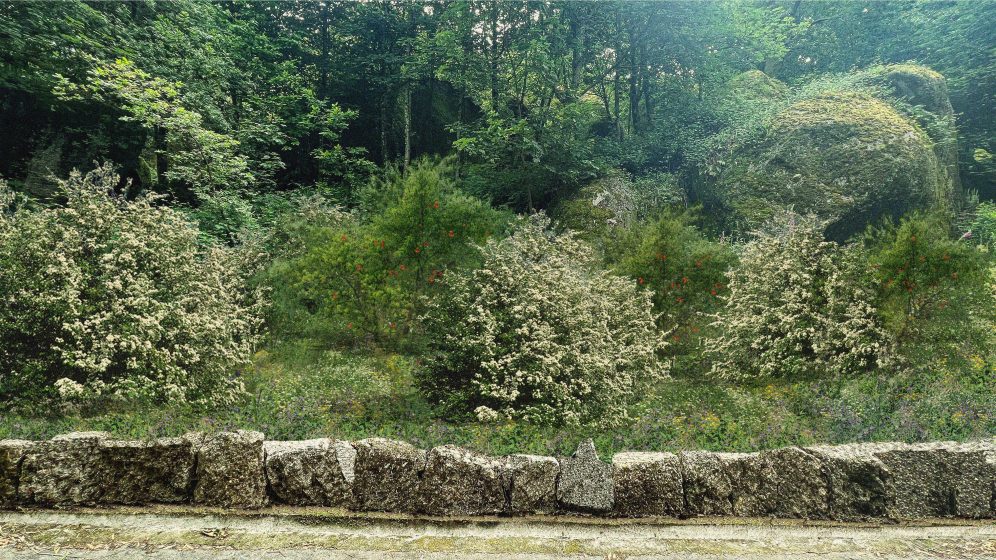
Empowering the community
Community engagement plays a crucial aspect when addressing the issue of invasive species, and the Municipality of Guimarães together with the Landscape Laboratory has played a proactive role in involving the community and raising awareness about this pressing concern. Since 2017, the municipality of Guimarães, in collaboration with the Laboratory of Landscape, has been actively working on managing the proliferation of invasive species. The collaborative efforts of the community and dedicated volunteers have made a significant impact. Over 25 awareness actions specifically addressing exotic invasive species have been organized and executed. These efforts have involved over 700 citizens including “green brigades” (groups of green volunteers in each parish of Guimarães), scout groups, schools, and individuals passionate about preserving the natural environment.
By continuing these efforts and involving the community in the ongoing management of invasive species, Guimarães sets an example for other cities facing similar challenges. The commitment to education, innovative approaches, and active participation demonstrates the city’s dedication to preserving biodiversity and maintaining the ecological balance of its ecosystems.
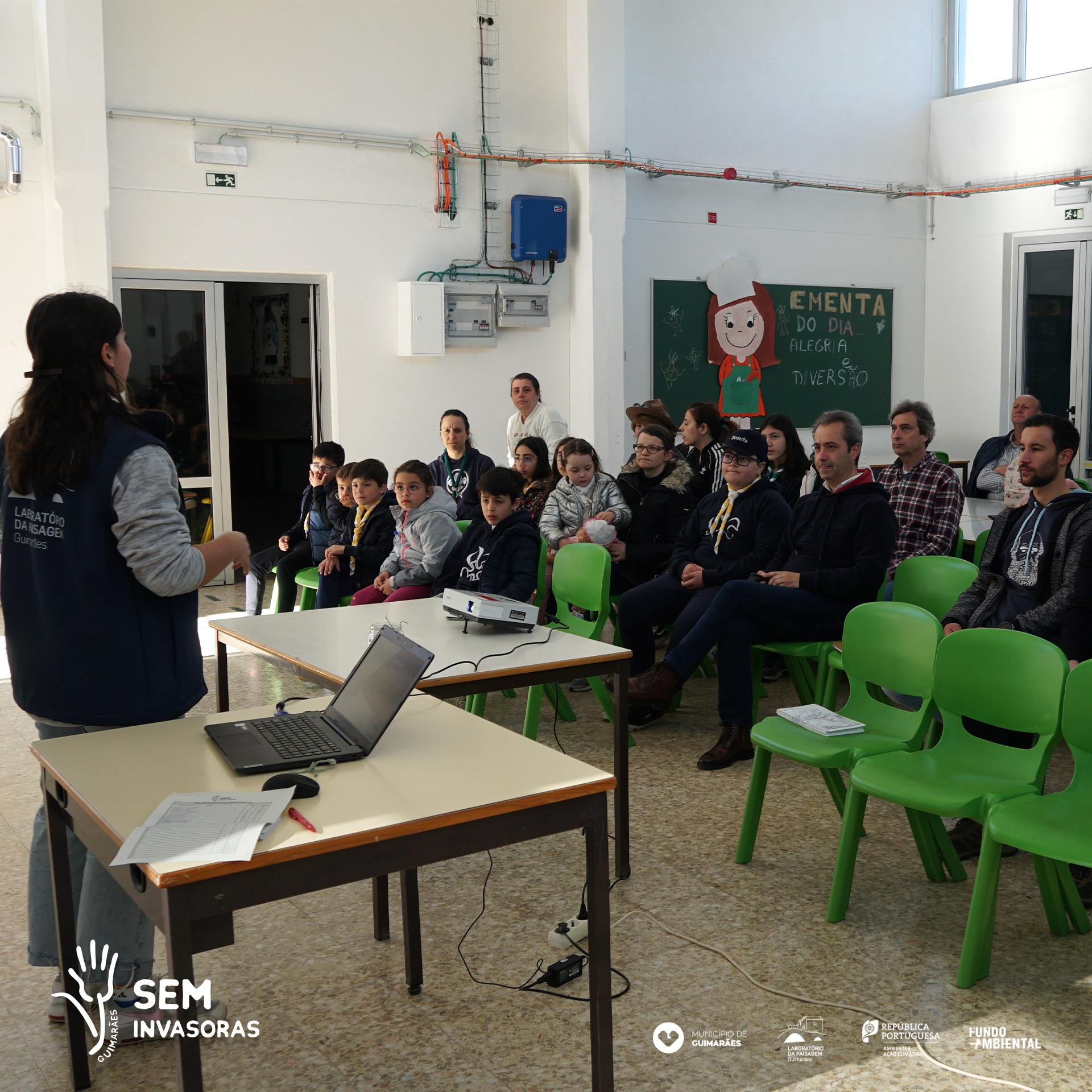
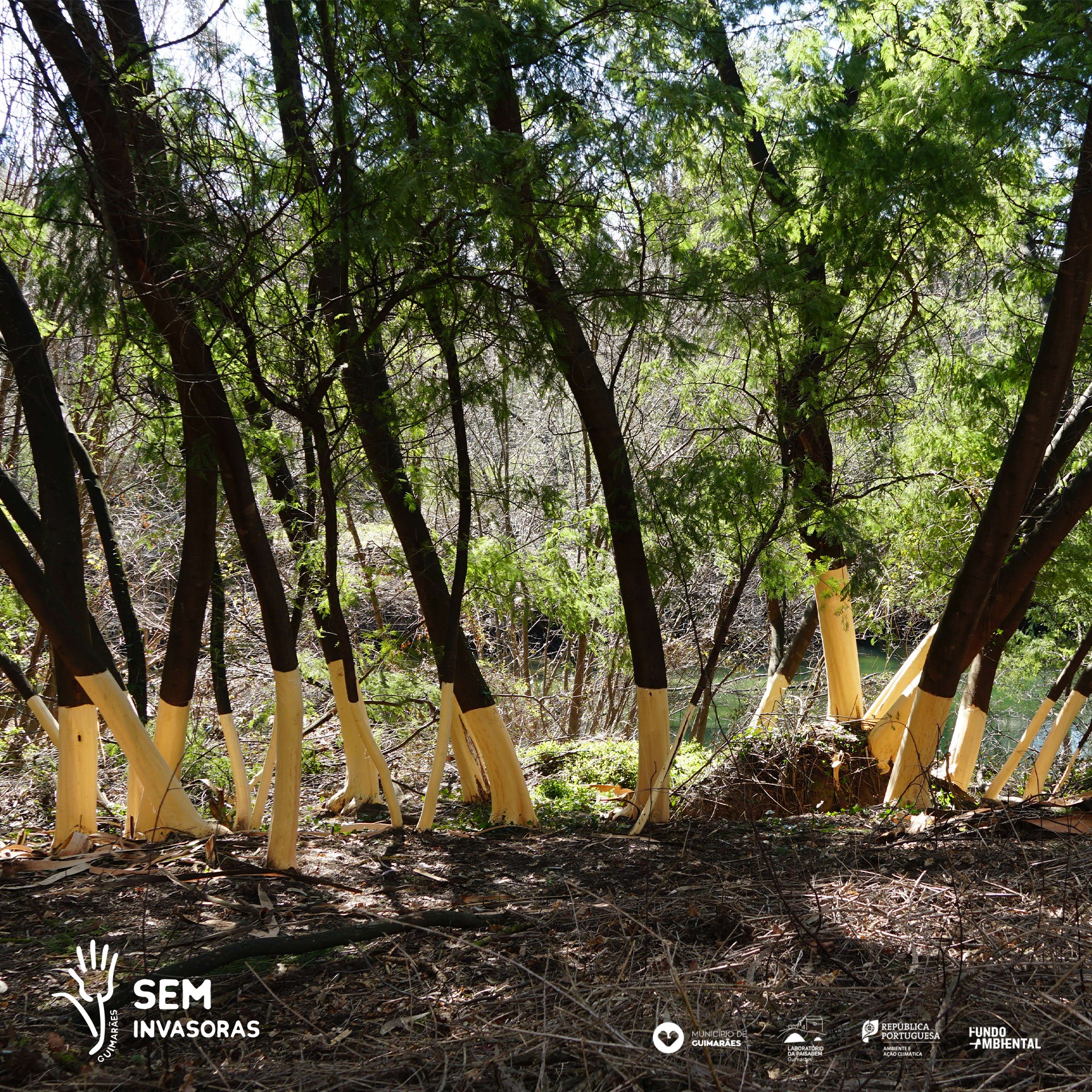
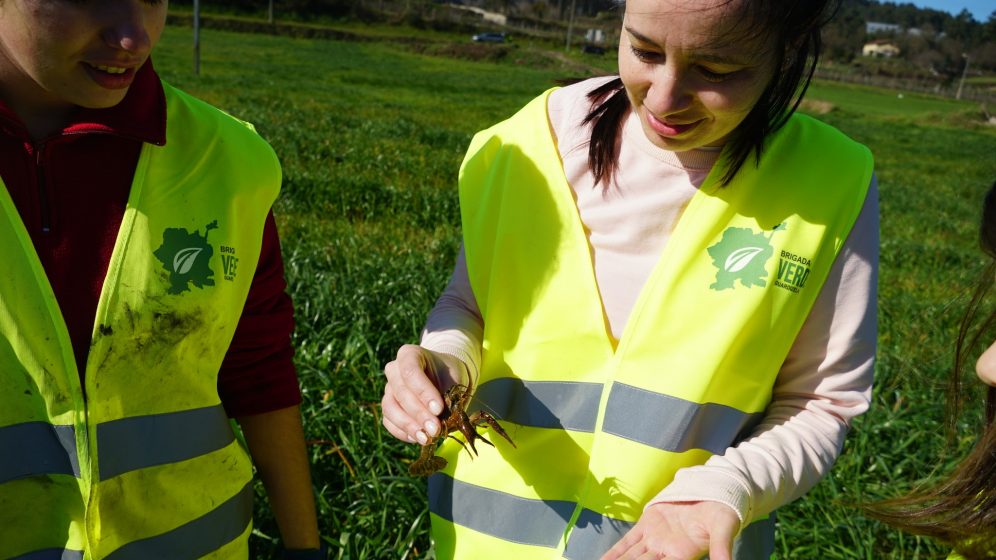
It is evident that raising awareness and actively involving the population in the control and management of invasive species is of utmost importance. The success of any effort aimed at combating these ecological threats relies heavily on the collective efforts and engagement of the community.
By fostering a sense of environmental responsibility and educating citizens about the detrimental impacts of invasive species, we can empower individuals to act and become stewards of their local ecosystems. Through awareness actions, educational programs, and community outreach initiatives, we can effectively disseminate knowledge and install a sense of urgency regarding the issue. Also, it is vital to continuously evaluate and develop innovative approaches that minimize harm to the environment while effectively managing invasive species. By investing in research, we can discover and implement control methods that are not only efficient but also have minimal ecological impact.
Ana Pinheira
Guimarães
Sources:
Haubrock, P. J., Turbelin, A. J., Cuthbert, R. N., Novoa, A., Taylor, N. G., Angulo, E., … & Courchamp, F. (2021). Economic costs of invasive alien species across Europe. NeoBiota, 67, 153-190.


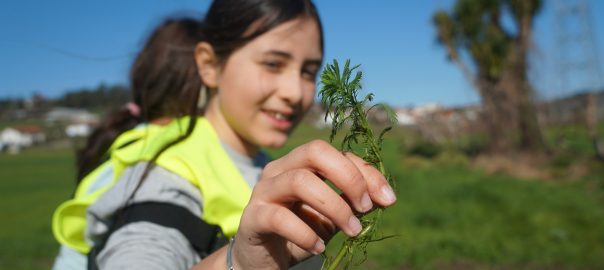
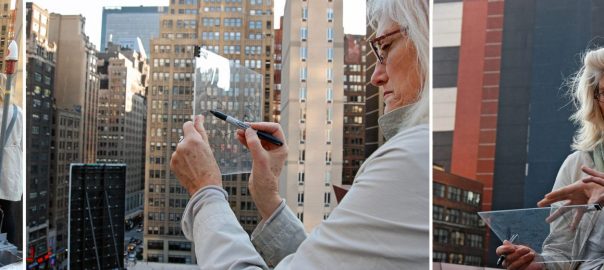

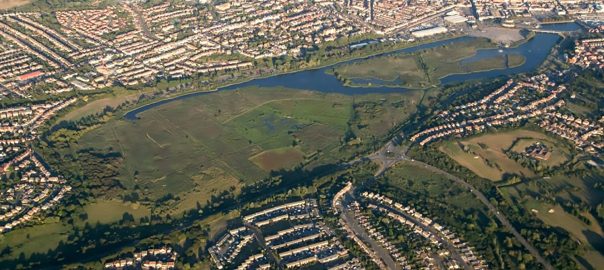
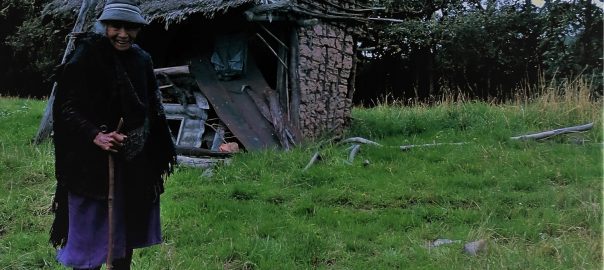
Leave a Reply